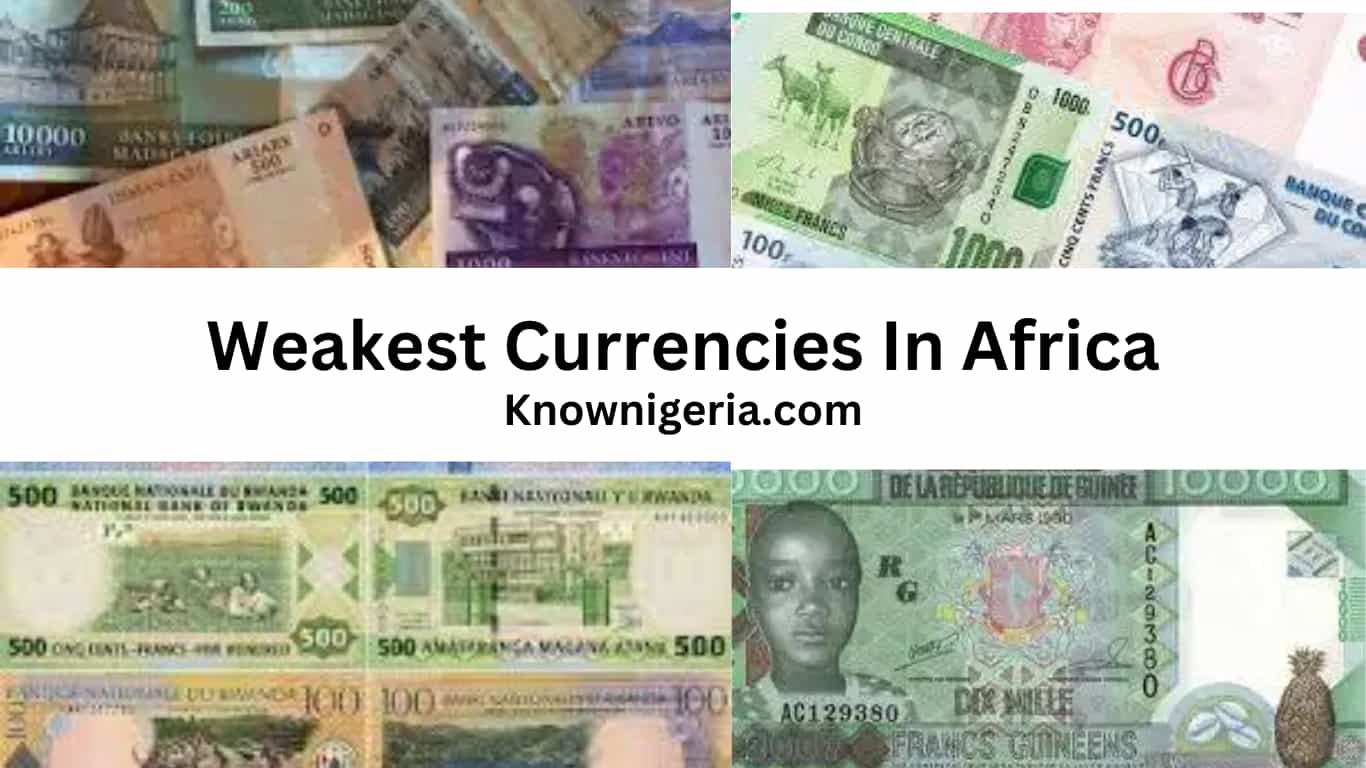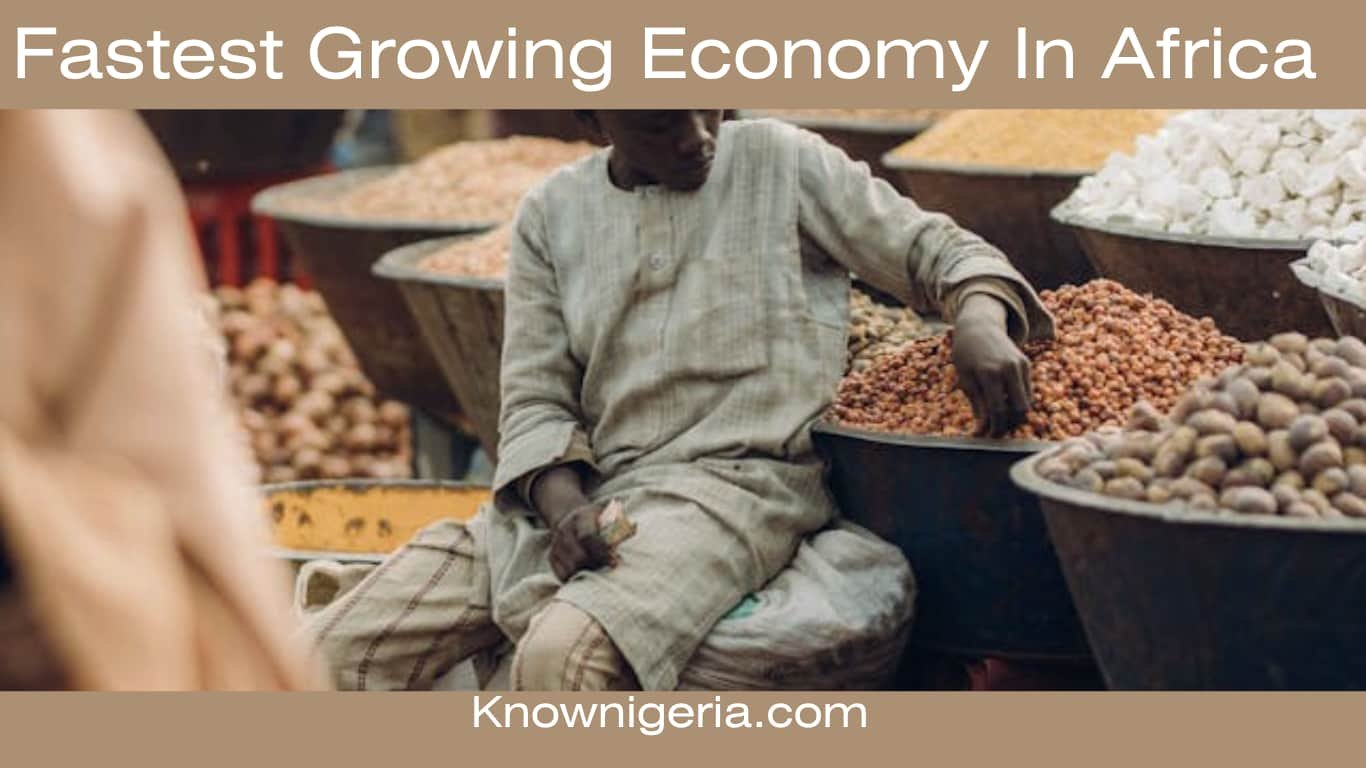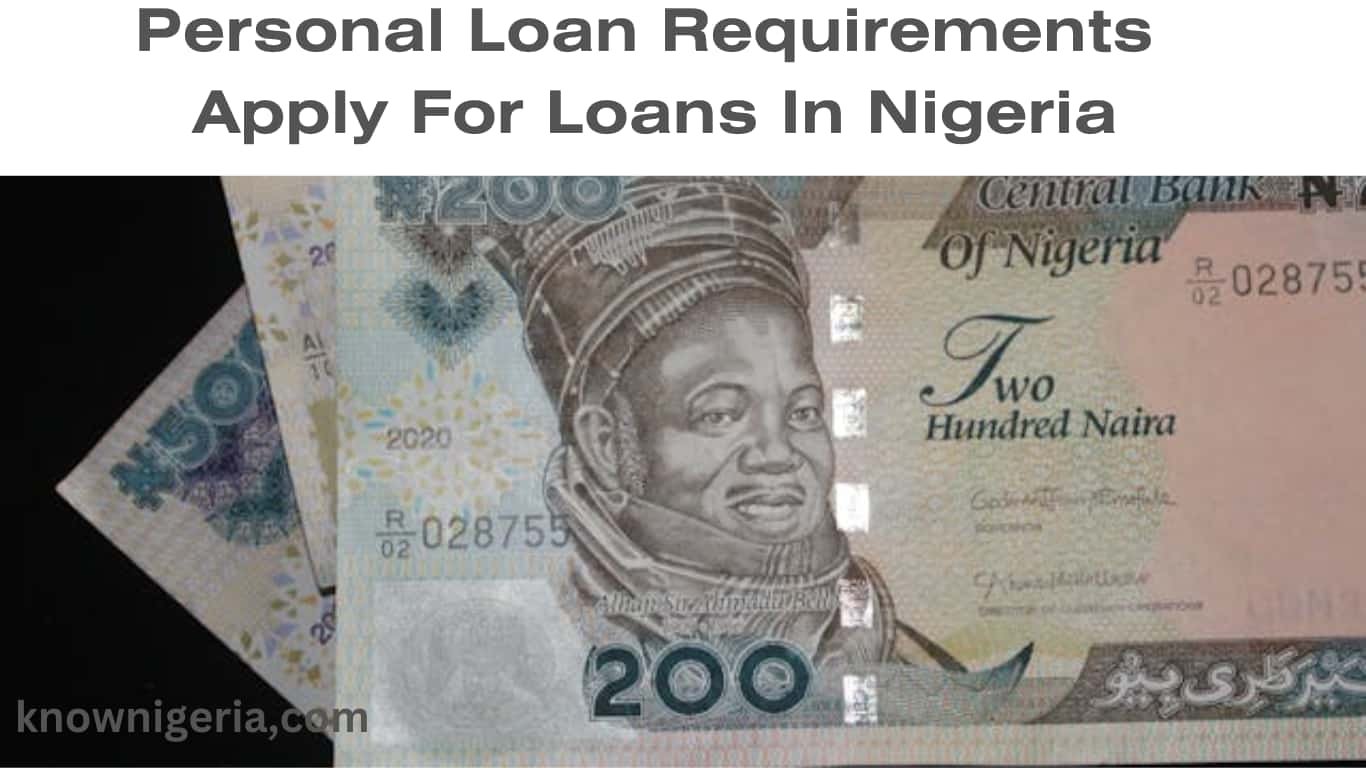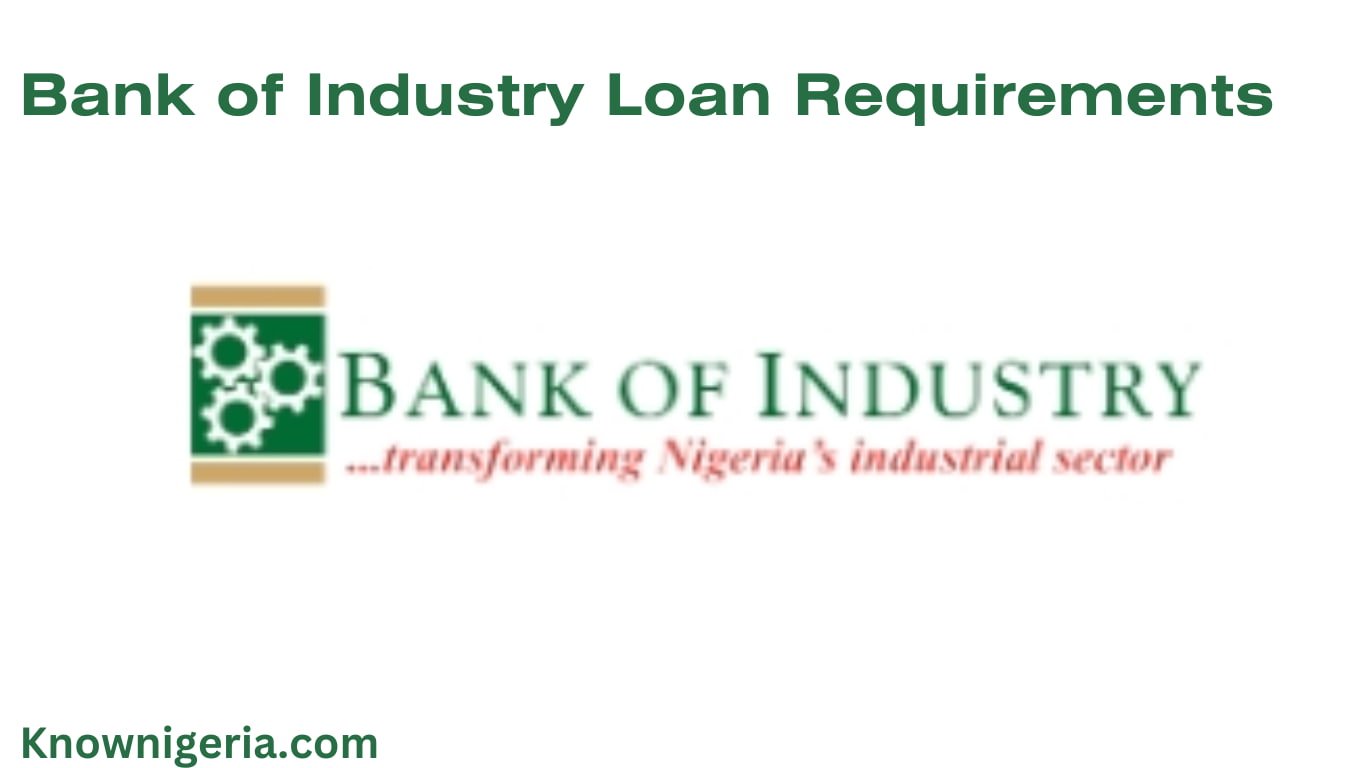Africa is a diverse continent, and this continent contains a wealth of mineral resources and diverse landscapes. Thereby enabling several countries to have a strong economy. However, there are several countries with the weakest currencies in Africa.
Several factors may lead to a country’s weak currency. Some of these factors may include the nation’s economic fundamentals, Export-dependent economies, inflation, government debt, current account deficit, trade imbalances, monetary policy, recession, and interest rate.
Nonetheless, In this article, we will list some of the countries with the weakest currencies in Africa and everything you need to know about them.
Table of Contents
What Makes A Country’s Currency Weak?
A devalued currency makes a nation’s trade very competitive in global markets. A currency is considered weak when the currency is devalued. In most cases, a country may choose to weaken its currency.
There can be various factors affecting a country’s weak currency, but the main factor is usually the nation’s economic fundamentals. The main reason why countries devalue their currency is due to trade imbalances.
This can help them reduce the cost of a country’s exports which will make them more competitive in the global market. Also, A country that is too dependent on exports is more likely to face weak currency conditions.
What Are The Benefits Of A Weak Currency In A Country?
While a weak currency may be bad in some aspects, it also has its benefits. A weak currency makes imports more expensive while making exports more cheaper for overseas customers to purchase.
A weaker currency may help a country’s exports gain market share when its goods are less expensive. Having a weaker currency helps to reduce the costs of interest payments on outstanding government debts, boost exports, and reduce the trade deficit. Also, Having a weaker currency helps to lower inflationary pressure from lower prices
Top 10 Weakest Currencies In Africa
Here is a list of the weakest currencies in Africa:
1. Uganda Shilling (UGX)
The Uganda Shilling is one of the weakest currencies in Africa. The Ugandan shilling formally had a subunit called the cent. High inflation and drops in the Ugandan shilling rate caused the shilling to be the smallest in-use unit. The main factor that causes the shilling weakness lies in the persistent trade imbalance that Uganda faces.
The Uganda economy faces many economic problems including limited industrialization, poor infrastructure, and heavy reliance on Agriculture. The over-dependency on agriculture is what makes the country fluctuate in commodity prices and weather conditions.
The exchange rate of 1 UGX is 0.00026 USD.
2. Congolese Franc (CDF)

Congolese Franc is the currency of the Democratic Republic of Congo. It has one of the weakest currencies in Africa. The Congo’s weak currency is based on Minerals, high dependence on the commodity price due to mineral exports, and on food and oil imports.
The country is so rich in resources, but it struggles with conflicts and corruption; these factors are the main reason why the economic development is not sustainable. The political instability also plays a key role in the country’s economic problems.
The exchange rate of 1 CDF is 0.00038 USD.
3. Sierra Leonean Leone (SLL)
Sierra Leonean Leone is an African currency that is highly affected by poverty. It is among the weakest currencies in Africa. The country faces many challenges and a heinous civil war in the western African countries. All this conflict leads the country to an economic downfall.
The economy of Sierra Leonean suffers from persistently high inflation, substantial debt burdens, and economic weakness. The exchange rate of 1 SLL is 0.00004 USD.
4. Malagasy Ariary (MGA)
Malagasy Ariary is the currency of Madagascar and it is one of the weakest currencies in Africa. The Malagasy Ariary currency is weaker due to several factors, including over-dependence on imports, corruption, counterfeit currency, and high inflation.
The Madagascar market structure is illiquid, with a constant buying position and a weakness in the supply of foreign currencies. The exchange rate of 1 MGA is 0.00022 USD.
5. Burundian Franc (BIF)
Burundian Franc is the currency of Burundi and it is one of the weakest currencies in Africa. The main reasons behind the persistent vulnerability of the Burundian Franc currency are environmental degradation, weak institutions, political instability, rapid population growth, extensive corruption, steep inflation, and high unemployment.
Burundi faces different challenges to improve the business environment while battling institutional problems. The exchange rate of 1 BIF is 0.00035 USD.
6. Guinean Franc (GNF)

The Guinean Franc is one of the weakest currencies in Africa, it is the national currency of the Republic of Guinea. Guinea experienced big economic challenges that led to bad economic conditions.
The nation suffers from political instability and widespread corruption, which is the main factor affecting its currency. The Guinea economy is unstable and heavily relies on the export of natural resources.
The country has a weak infrastructure and foreign investment. The exchange rate for 1 GNF is 0.00011 USD.
7. Tanzanian Shilling (TZS)
Tanzanian Shilling is the national currency of Tanzania, it is subdivided into 100 cents. It is among the weakest currencies in Africa.
The major factor affecting the weakness of the Tanzanian currency is the reduced inflow from key sectors like crop exports and tourism. The Tanzanian currency is low due to the high demand that Tanzanian individuals and businesses are seeking foreign currency for different purposes such as capital flight, imports, and debt servicing.
The currency remains under intense pressure due to an FX shortage and rapidly increasing inflation. The exchange rate of 1 TZS is 0.00040 USD.
8. Malawian Kwacha (MWK)
Malawian Kwacha is the currency of Malawi as of 1971, replacing the old Malawian pound. The Malawian has been facing difficult economic conditions due to an acute shortage of diesel and petroleum and also high inflation. It is among the weakest currencies in Africa.
The currency was devalued by 25% by the central bank as of May 2022, followed by another 44% devaluation in November 2023, raising the inflation rate in Malawi. The economy is very vulnerable to the weather conditions and natural disasters.
One of the main factors affecting the Malawian Kwacha’s exchange rate is the country’s heavy dependence on Imports. The exchange rate of 1 MWK is 0.00088 USD.
9. Rwandan Franc (RWF)

Rwandan Franc is the national currency of Rwanda. Rwanda’s public sector-led development model has shown its limitations, with public debt rising in recent years. The leading sectors include mining, energy, hospitality, trade, financial services, and agriculture.
The Rwanda economy is heavily dependent on agriculture. Despite different factors to stabilize the Rwandan currency, the demand for dollars continued to rise, which is leading to ongoing depreciation of the RWF.
The situation has been worsening due to external shocks, including rising energy, global inflation, the war in Ukraine, and the appreciation of the dollar. The exchange rate of 1 RWF is 0.00080 USD.
10. Angolan Kwanza (AOA)
Angola Kwanza is the national currency of Angola and it is one of the weakest currencies in Africa. The Angola Kwanza has been devalued by 40% in June 2023, due to a drop in foreign exchange supply from the treasury and from oil companies experiencing unexpected weakness due to maintenance operations.
Angola is one of the most oil-dependent African countries, with oil accounting for about 28.9% of GDP and 95% of exports. The Angola economy has gone through different challenges that caused the country’s currency to fall. The exchange rate of 1 AOA is 0.0012 USD.
Why Would Countries Devalue Their Currency?
A devalued currency makes a nation’s trade very competitive in global markets. So, a country can consider devaluing its currency. Also, A currency is considered weak when the currency is devalued.
What Are The Causes Of A Weak Currency?
Some of the major causes of a weak currency include economic fundamentals, Export dependent economies, inflation, government debt, current account deficit, trade imbalances, monetary policy, recession, and interest rate fluctuations.
Conclusion
A country’s weak currency may be due to several reasons. In most scenarios, a country may decide to devalue its currency for one reason or another. Also, note that a weak currency may not necessarily mean a weak economy. Nonewithtanding this article has listed the top 10 weakest currencies in Africa.
Reference
- Fxopen.com
- Africa.businessinsider.com
- Africaviewfact.com










